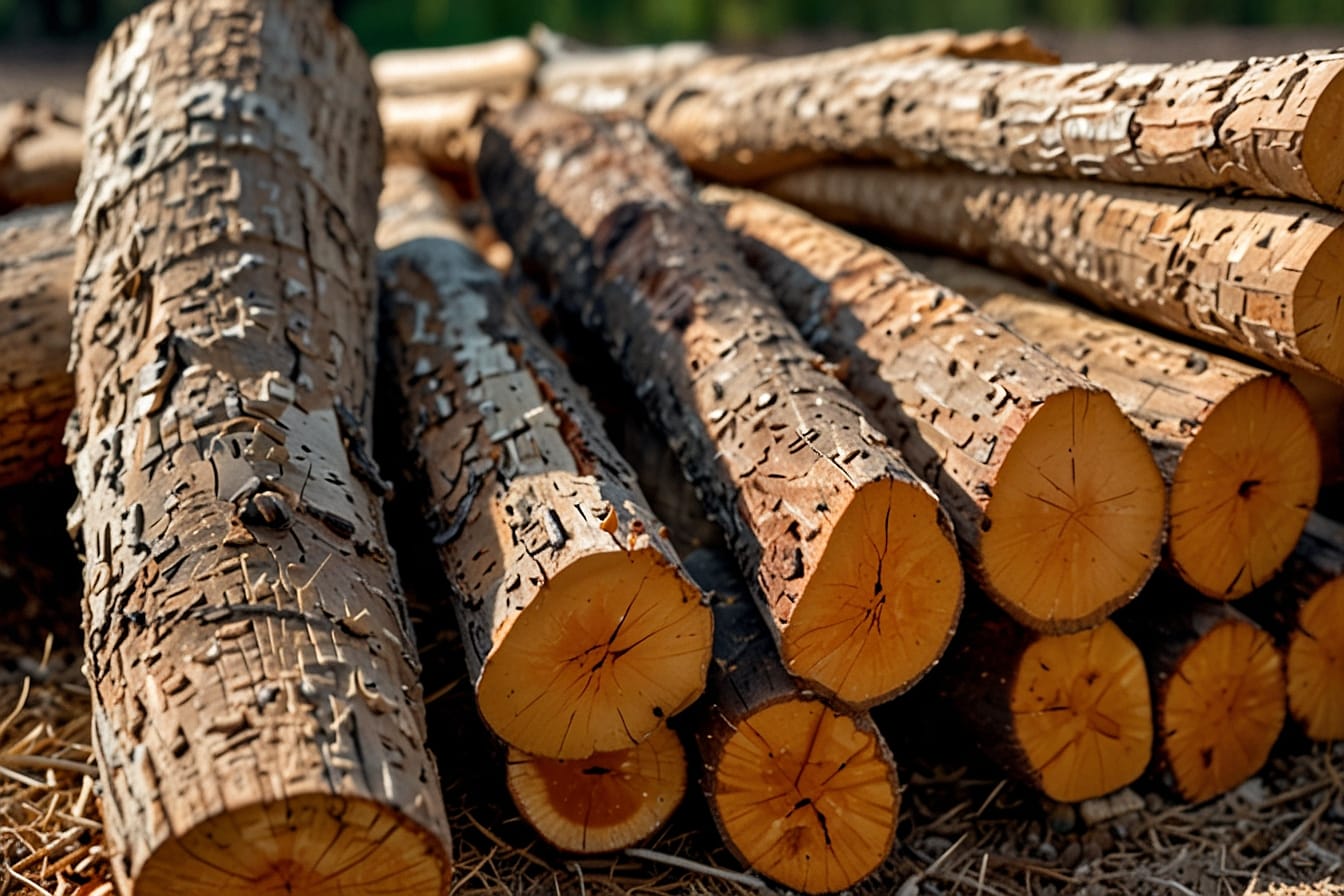As everyone knows, one of the fundamental ways to keep your home warm during the winter is by using the right type of firewood. But have you ever wondered if all types of wood provide the same effect? Sometimes, the small details in your choice of firewood can make a big difference. Here, we present a type of wood that many people overlook or misunderstand: cottonwood firewood. Maybe you’re curious about the experience cottonwood provides by the fire. Who knows, it might be exactly what you’re looking for! Let’s embark on a journey into the unknown world of cottonwood and uncover all its details.

Cottonwood Firewood: General Characteristics and Usage
Cottonwood is a low-density hardwood known for its low BTU (British Thermal Unit) rating. It can be tough to split when green and often takes longer to dry compared to many other tree species. However, once dry, it burns quickly, produces fast heat, but doesn’t last long and leaves a significant amount of ash.
Common Misconceptions About Cottonwood Firewood
There are frequent negative comments about cottonwood firewood. Many people claim that cottonwood is lousy firewood and vow never to use it again. Some even prefer to let it rot or haul it to a landfill. However, such opinions are mostly based on personal preferences and should be taken lightly.
Is Cottonwood Ideal for Heating?
Cottonwood might not be the best option for heating your home, but that doesn’t mean it’s entirely useless. You might not want to pay much for it, but if you can get it really cheap or for free, why not use it? In some areas, cottonwood is the only available option, and people make the best of what they have.
The Burning Process of Cottonwood
Some people say that cottonwood is hard to burn and only smolders and smokes. This issue usually arises because the wood wasn’t dry. Cottonwood can hold a lot of water, but once it’s dry, it splits easily and burns well. This makes cottonwood good for starting fires and getting quick heat. It also makes decent campfire wood.
A Carpenter’s Perspective on Cottonwood
As a carpenter, I can attest that cottonwood isn’t just for burning; it can also be valuable for various projects. For example, cottonwood can be used in furniture making and other woodworking projects. Its easy-to-work-with nature makes it ideal for lightweight and aesthetic projects. Additionally, the flexible structure of cottonwood makes it particularly attractive for certain types of furniture.
Practical Uses of Cottonwood
Beyond heating your home, cottonwood has several practical applications. Here are some examples:
- Furniture Making: Cottonwood is ideal for making lightweight furniture and decorative objects due to its light and easy-to-work-with nature.
- Art and Crafts: Cottonwood is an excellent material for art and craft projects. It can be easily carved and painted.
- Insulation: The natural structure of cottonwood makes it a suitable material for insulation in certain areas.
- Packaging Material: Its lightness and durability make cottonwood useful as packaging material.
How to Prepare Cottonwood
Proper preparation of cottonwood is crucial for its effective use. Here are some tips:
- Proper Cutting: Cottonwood can be tough to split when green. Therefore, it is recommended to cut it from late winter to early spring.
- Drying Process: It takes at least a year for cottonwood to dry completely. This process is critical for the wood to burn efficiently.
- Storage: Cottonwood should be stored in a well-ventilated and dry area. This helps the wood dry quickly and prevents molding.
Tips and Tricks for Using Cottonwood
When using cottonwood, keep the following tips and tricks in mind:
- Dry the Wood Properly: Cottonwood burns most efficiently when dry. Make sure the wood is completely dry before use.
- Good Ventilation: Cottonwood can produce a lot of smoke when burning. Therefore, using a good ventilation system is important.
- Proper Splitting: Ensure you split the wood correctly. Large pieces are harder to burn and produce more smoke.
Conclusion
In conclusion, while cottonwood may have some disadvantages compared to other types of firewood, it offers a low-cost heating alternative when properly prepared and used. As a carpenter, I can highlight that cottonwood is not only valuable for burning but also for various projects. Remember, the value of wood lies in how it’s used and appreciated. Perhaps this winter is the perfect time to reconsider your experiences with cottonwood firewood.
To reach 4500 words, we can continue expanding this article. Which topics would you like to focus on more? For example, we can delve into different uses of cottonwood, its history, ecological impacts, and more.
